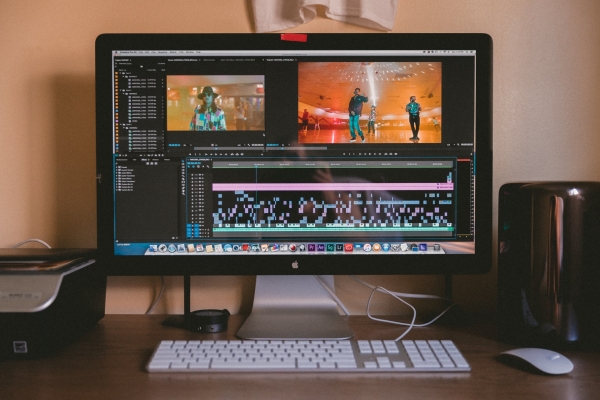No matter how you encounter or consume it, video is here to stay as one of the leading ways to develop and deliver engaging content online. Nearly every online marketer is using video in one way or other. And, audiences are watching! So how do we, as producers and creators, go about meeting this insatiable demand?
First, we need to consider two separate but interrelated questions:
• How do we manage the actual production process?
• What do we do with the completed files?
Production is best supported by a Media Asset Management (MAM) system. The MAM unifies the work-in-progress production of video projects across multiple workstations’ native editing tools. MAMs are often distinguished by deep integrations with video editing tools, with optimizations around the myriad issues related to interacting with large files. Plus, more project-management-like capabilities (sometimes industry specific, e.g. news, sports, feature films, etc.).
Digital Asset Management (DAM) systems house asset components (stock, b-roll, etc.) and finished videos for downstream distribution or as a library of components for reuse in future work (or research). But a DAM is more than just a storage facility. To get the most out of a DAM and its capabilities, consider the following best practices.
Standardize Your Format. Video is historically produced in a variety of ever-evolving formats. To ensure your users can easily access and view your videos, you need to decide on a standard format that works for the widest range of publishing platforms and devices. There’s nothing more frustrating than finding that a video you want to watch won’t play on your computer, tablet, phone, etc.
Generate Previews. No one wants to play through a full video to confirm it’s the one they want. To help your users, make sure your DAM can generate lower-resolution short clips that can be streamed to a device, allowing users to sample the content without having to wait for a full download. Preview pictures based on screen captures can also help with identification. More sophisticated DAMs also enable automatic storyboard generation based on scene detection.
Analyze the Content. Video files contain a lot of information—not just technical details about the file itself, but what the video is about, the people, places and products contained in it. Your DAM should be able to pull metadata from video files and allow you to extract and add additional details that can be searched, found and used. Ideally, you should create a consistent metadata strategy with defined tags and agreed-upon meanings, along with a minimum set of metadata tags needed for each video file.
Hi-Res First. When importing and cataloging video files in your DAM, use the highest possible resolution to support any possible downstream needs; in short, know your needs so you can store at the right level. This may mean that processing takes longer initially, but then you will have a high-quality baseline from which to create whatever lower-resolution files you may need for previews, downloads, etc.
When creating different versions of a video, be sure to include information such as resolution, length, and frame rate in the metadata so it can be aligned with the specifications for the desired output platform. Different platforms have varying specifications for video files. For instance, the specifications for YouTube, Instagram, Facebook, and TikTok are all different.
Think About Bandwidth and Storage. Video files are inherently large, much larger than typical image files. Some can be as large as terabytes in size, so bandwidth could be an issue. Keep in mind that you can only be as good as your slowest pipe, so consider not just what you store but how you access it.
Large files may also require large amounts of storage. As demand for video increases, consider a cloud-native DAM which allows you to scale storage capacity as needed. Your team can access cloud storage, allowing for more-efficient collaboration and wider use of video assets regardless of location.
DAMs should facilitate the distribution and delivery of finished video assets via portals like Brightcove/Kaltura, social media, WebCMS, and so forth. These integrations avoid much manual processing and sending, which may also help overcome mistakes that prompt rework and reduce cycle times.

